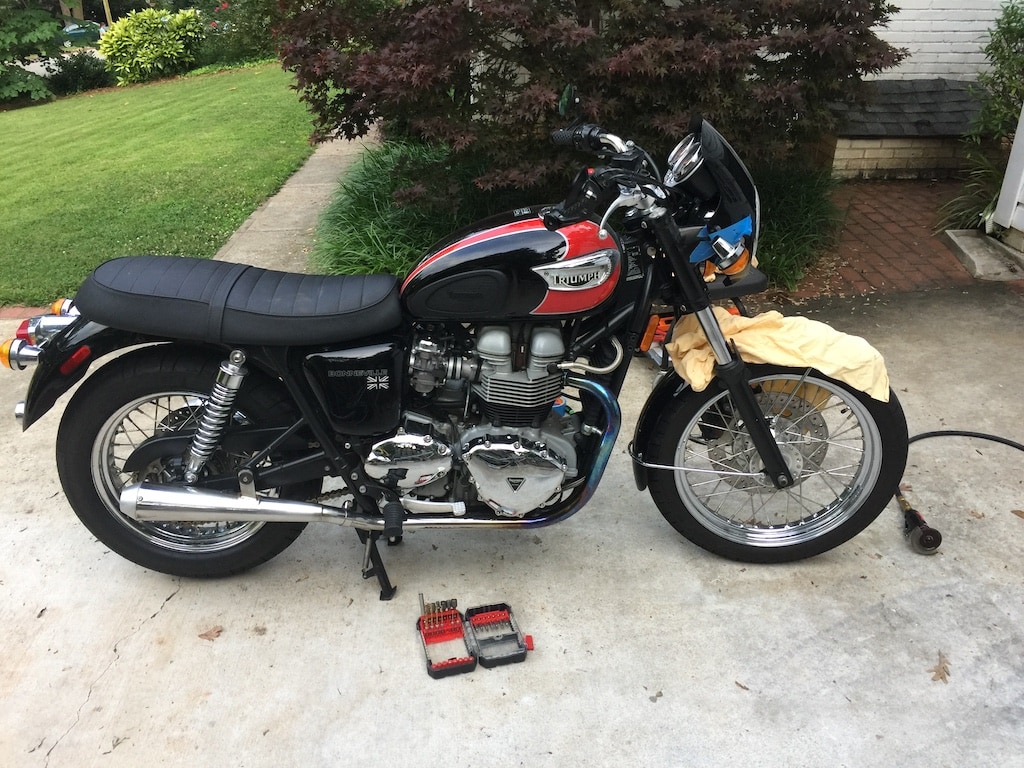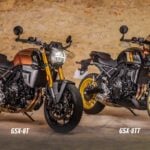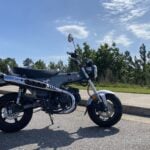The Challenges Of Aftermarket Parts
There are few universal truths in the world, but one I’ve come to learn with regard to motorcycle repair is that if an aftermarket part promises it will fit, you can be damn sure it won’t. Inevitably, something always gets lost in translation. Yet knowing these dangers, I still venture into the world of aftermarket parts hoping and praying that things will be different this time.
The issues surrounding aftermarket parts appear for a myriad of reasons. Some arise because the part doesn’t account for minor changes across model years. Other times, the part is made so generic, with an aim of fitting as many makes and models as possible, that in the end you have to customize it to make it fit. Discovering these issues in the midst of a repair or modification is as deflating as a punch to the gut. And I’m sure most folks who spin a wrench can relate. You start the project only to find out that something is awry. What you anticipated being a simple job ends up taking an entire day or more. Yet somehow, through it all, we remain cautiously optimistic. We continue to order these parts because they are either cheaper than OEM or they offer something not found in the manufacturer’s catalog.

This was the case when I ordered an aftermarket flyscreen fairing for my 2006 Triumph Bonneville T100. The ad on eBay… I know, my first mistake was ordering parts off of eBay, as they are always a gamble. Yet, when it comes to used parts or a mod I’m unsure of, as was the case with this flyscreen, eBay is a practical option. Anyway, knowing that it’s always buyer beware on eBay, I searched the site for a flyscreen that would fit my Bonneville. I had my heart set on a wrap-around fairing, rather that the small windscreens that mount to the top of the headlight. And to be honest, the complications stem from this decision. I jumped into the eBay abyss with both feet and nearly drown in the flood of flyscreens that my search returned. I narrowed the search a bit by adding refinements like T100, gloss black (since my bike is gloss black and red), and so forth until the system returned a manageable list. I sorted them by price and looked through the images, moving any with photos of the flyscreen on a Bonneville to my watchlist. I’ve learned from previous mistakes that looking for an image of the part on a bike similar to mine is key. At least this way, I know someone got this flyscreen on a Bonneville. I settled on a reasonably priced flyscreen that was titled, “For Triumph Bonneville T100 Headlight Fairing Flyscreen Windshield.” It sounded like a safe bet, or so I hoped.
The flyscreen eventually arrived but in a condition I was surprised to see. Amazingly, the plastic flyscreen was not shipped in a box, rather it was spun in a roll of bubble wrap, taped up, and sent on its way. I was a little shocked to see how it arrived and upon unwrapping I felt the need to give it a full inspection. After careful review, I found no cracks, chips, or any damage whatsoever. But this sense of relief proved short-lived, as the part had more surprises in store. Rather quickly, I noticed the flyscreen was NOT going to fit my machine. The turn signal mounts on my T100 ran smack into the flyscreen, meaning that if I was going to get this item on my machine, I’d need to come up with a solution.
I ruled out new turn signals, as I was still unsure if the flyscreen was going to be a permanent fixture on my Bonneville. I really needed to see it on the bike to know if I would like it or not. My opinion was also tainted a bit by my eldest son, who upon seeing the part held up to the headlight, immediately uttered, “I don’t like it.” Well, tell me how you really feel. I know I was on the fence about it, but the commentary from the sidelines and my frustration with the fitment was not helping me make up my mind. I opted to proceed by altering the part in question. After some measurements, I traced notches into the sides of the flyscreen that accounted for the turn signal posts. This meant I’d need to break out the whiz wheel and cut the part I’d just purchased. My trepidation was eased by the fact that this was an eBay part that wasn’t overly expensive to begin with, so I fired up the compressor and got to cutting. The first cut was a little nerve-racking, but I became more confident as the channels for the turn signals began to take shape.
Following several slow passes with the whiz wheel, I got the slots roughly outlined and after verifying the cuts would work, I sanded down the part to give it a professional finish. A couple of sprays with some black paint, to cover up my work, and we were in business, or so I thought. I soon discovered that the additional width of the flyscreen meant the stock headlight bolts would no longer engage the threads in the headlight bezel. So, I needed to run to the hardware store to locate some longer bolts. With those in hand, I finally had a flyscreen that would work on my Bonneville. And while the above sounds painless enough, this still took me the better part of an afternoon. What should have been as simple as replacing the two bolts that mount the headlight to the forks, required a bit of ingenuity, several more tools, and as mentioned, more time than initially anticipated.
Oh, and the work didn’t end there. When I took the bike for a test ride with the new flyscreen, I noticed a discernible buzzing coming from the new part. At speed, the flyscreen was contacting the speedometer and tach. I loosened the headlight bolts again and was able adjust the fitment in such a way that it prevented the flyscreen from contacting the gauges. After all that, I now have an aftermarket flyscreen successfully mounted on my Bonneville.
None of these challenges with aftermarket parts should come as a surprise. If you’ve read enough online or watched your fair share of YouTube videos, you know this is a common topic among motorcycle enthusiasts. Our motorcycles are made all over the world, from Europe to Southeast Asia, and the aftermarket parts we aim to mount on these machines may come from opposite sides of the world. Aftermarket companies must contend with continual updates to motorcycle models, differences in language and sometime even standards of measure, build quality and variables in reproductions, etc. It’s a small miracle these parts even fit at all when you consider the number of players and factors involved. For those of us who enjoy working in the garage, problems with aftermarket parts are familiar territory. In fact, I’ve come to expect hurdles anytime I order such parts. I recommend keeping an open mind. See these challenges as an opportunity to think through a problem and devise a feasible solution. I also try to view these moments as a chance to learn new skills or improve upon old ones.
In the case of this flyscreen, I got to break out the whiz wheel and cut up a brand new part. By taking my time, I got the part to where I eventually needed it to be and it is currently on the bike. And my oldest son even changed his tune and let me know after it was mounted that, “It looks OK.” I’ll take that. I’ll also take the new skills learned along the way, so the next time a problem like this arises with an aftermarket part, I’ll be ready to take on the project with confidence because when they claim it will fit, I’ll know better.
Christian
Instagram: @motorcycle_prof





























0 Comments